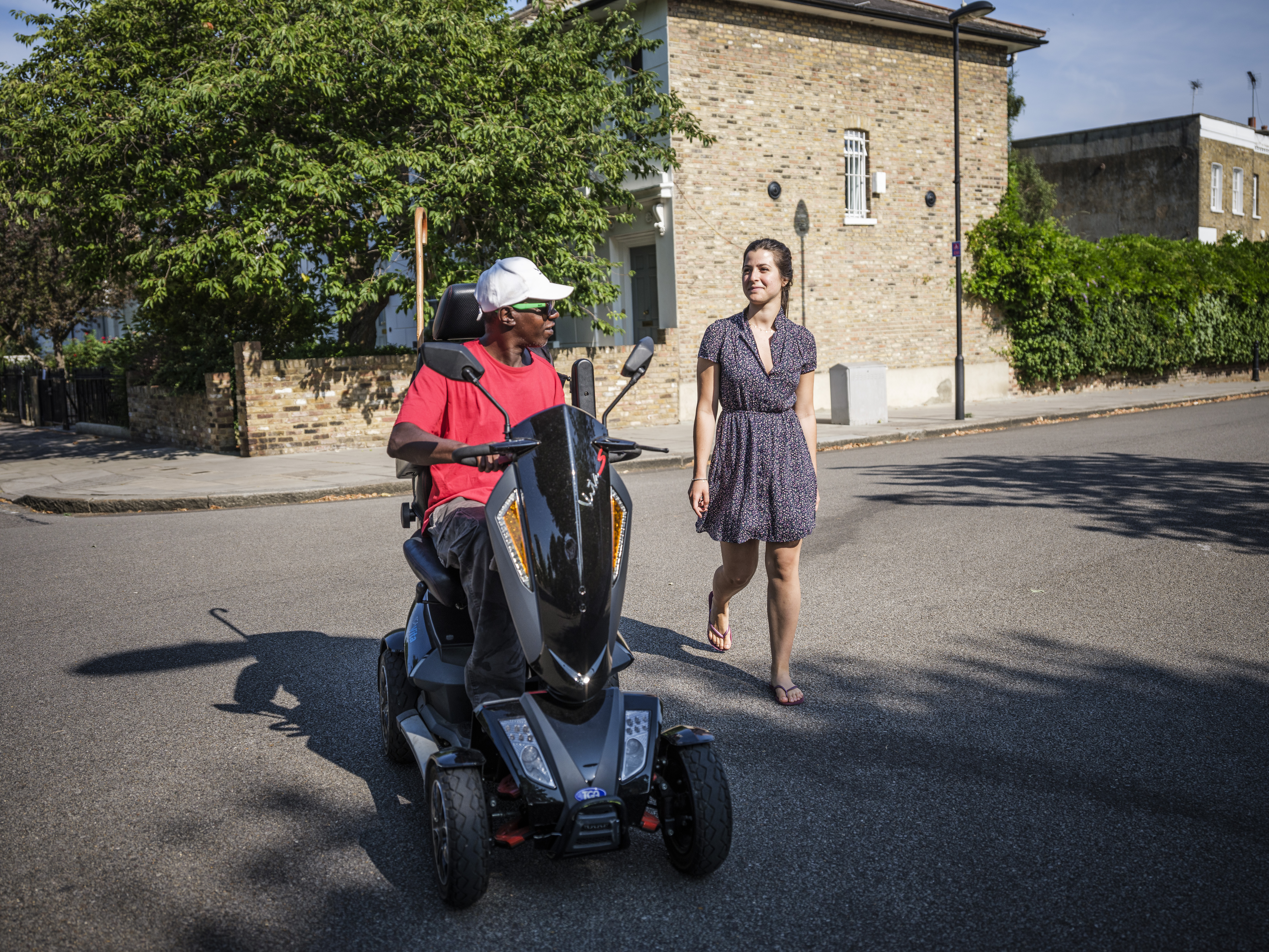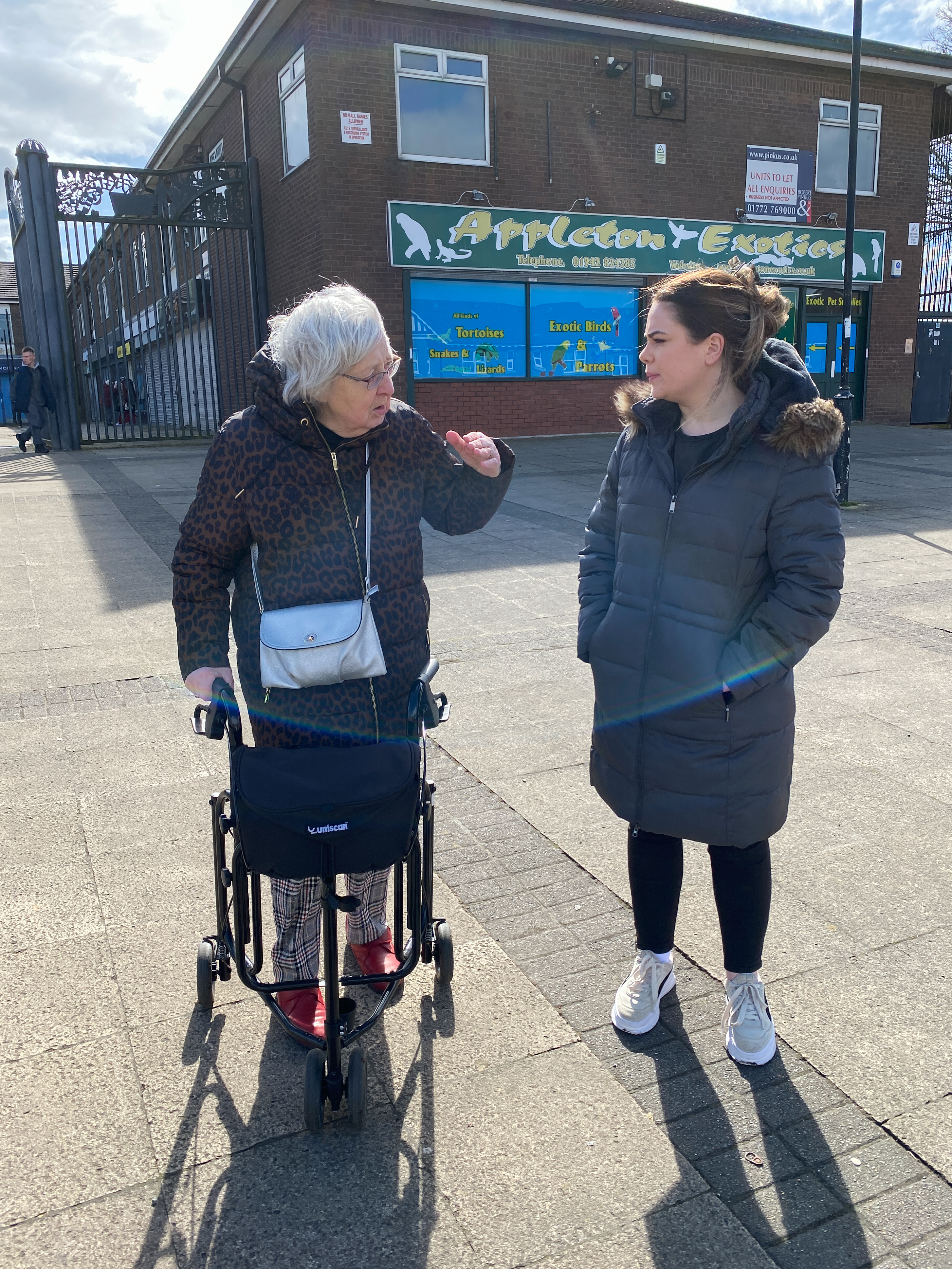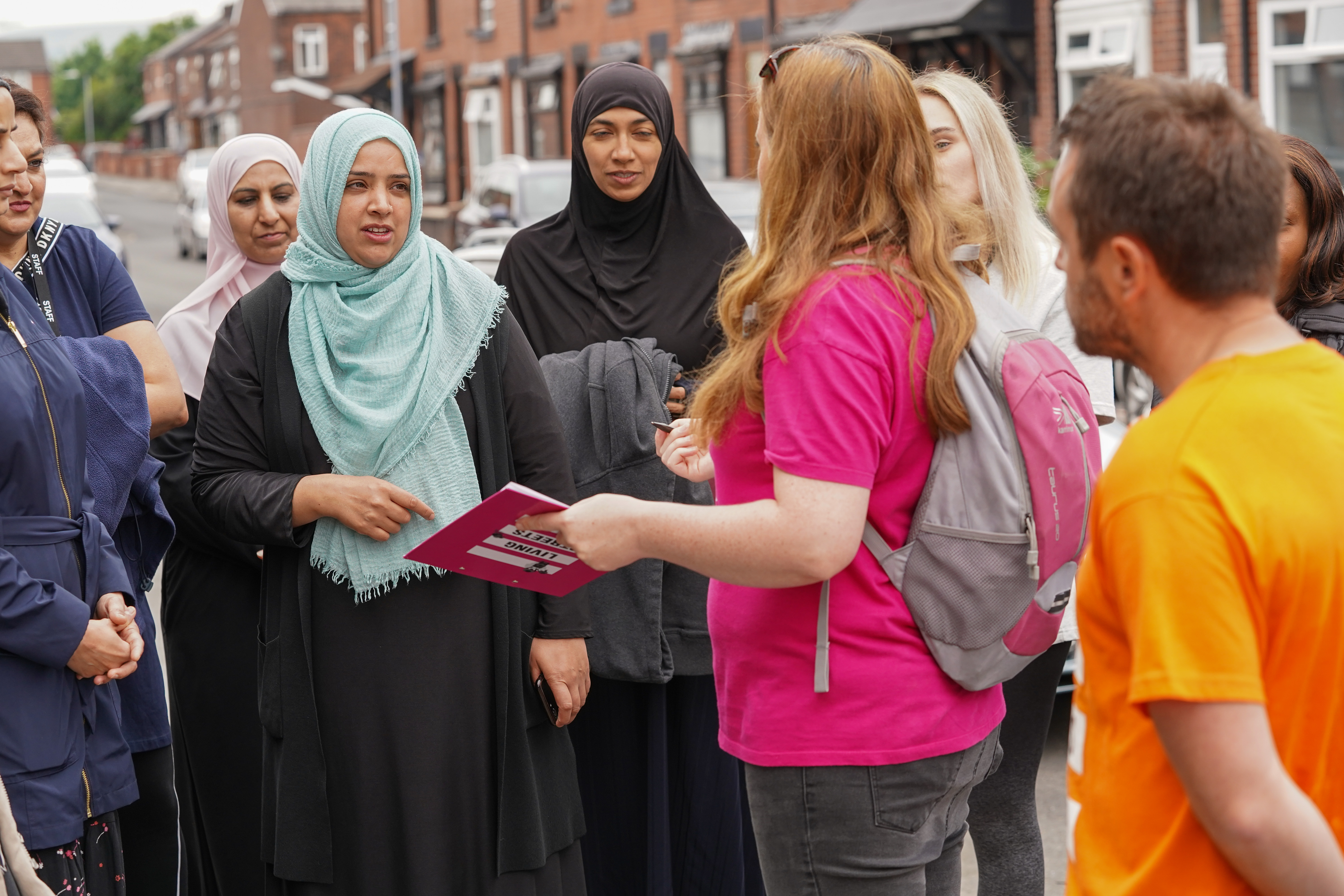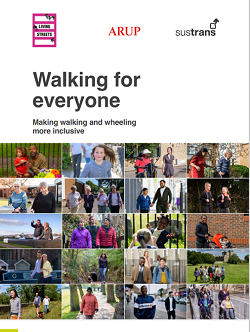Walking for Everyone
Arup, Living Streets and Sustrans worked together to understand behaviours surrounding walking and explore the factors that impact people’s experience of walking.
'Walking for Everyone' is designed to support national and local governments including transport and spatial planning professionals, organisations helping to improve the lives of people who may be marginalised, and anyone helping to make walking and wheeling more inclusive.
Whilst our recommendations are primarily focused on the UK, many are applicable across the world.
There are many successful and inspiring examples where places have made walking and wheeling more inclusive. With the right political will, investment, and knowledge, walking and wheeling can help people from all backgrounds, ethnicities, ages, abilities and genders.
While differences exist between different demographic groups, many of the barriers to improve walking and wheeling are shared. Therefore, rather than focusing on the differences between people, this guidance attempts instead to address common issues and solutions that would benefit many people across different marginalised groups.
We have grouped recommendations and actions into three themes:
1. Improving governance, planning and decision making
2. Creating better places for everyone to walk and wheel
3. Supporting everyone to walk and wheel
The recommendations are summarised below and detailed in the report.
Our recommendations in brief
1. IMPROVING GOVERNANCE, PLANNING AND DECISION MAKING
Recommendation 1: Develop inclusive walking and wheeling plans
All UK nations should have a specific plan for walking and wheeling to complement existing plans, or that existing plans should be made more even to ensure equal focus on actions for walking and wheeling as those for cycling.
Recommendation 2: Dedicate long-term funding for making walking and wheeling inclusive, accessible and desirable
It is essential that local governments understand the improvements which need to be made for walking and wheeling, and that national governments support local transport authorities to focus more on walking and wheeling through guidance and funding.
Recommendation 3: Take steps to ensure policy decisions are based on diverse voices, especially those of groups often marginalised
All transport strategies, planning and investment, that include walking and wheeling should be designed around the diverse needs of citizens, and prioritise marginalised groups. This can only happen when people making decisions are representative of people living in the UK and when they listen and engage people with lived experience in decision making.
Recommendation 4: Capture better walking and wheeling data from different groups, and invest more in research
A lack of data exists on walking and wheeling across the UK. There is even less disaggregated or intersectional data available, i.e., data that has been broken down by demographic groups, for example gender, religion, or socio-economic status.
Recommendation 5: Embed proximity to the things people need into spatial planning by adopting a ‘20-minute neighbourhood’ approach
National planning policy can ensure services and amenities are no more than a 20-minute return walk or wheel from where people live. This equates to less than 800m for most people, although distances should be even shorter to make the 20-minute neighbourhood fully inclusive.
Recommendation 6: Invest significantly in public transport across the UK, especially buses
Public transport use is intrinsically linked to walking and wheeling. The first and last part of most public transport journeys are walked or wheeled. Public transport allows for longer journeys by bus or rail that are sustainable. However, when public transport services are inadequate, too expensive, or poorly located the result is many people choosing to drive or being left isolated.

2. CREATING BETTER PLACES FOR EVERYONE TO WALK AND WHEEL
Recommendation 1: Develop national design guidance for walking and wheeling infrastructure
To create inclusive streets and neighbourhoods for everyone to walk and wheel, we need national design guidance. This should go hand in hand with national funding to ensure that best practice is followed where funding is allocated.
Recommendation 2: Take steps to improve road safety, air quality and reduce physical severance by roads
Many marginalised groups are more likely to be involved in a road collision or suffer from air pollution.
Many groups, especially disabled people and people who live in suburban or rural areas are can be more dependent on cars. This is often driven by how we have planned and designed the built environment, and the reverse is true in London where disabled people use cars less than non-disabled people both as a driver and as a passenger. We need to ensure their needs are considered whilst working to provide attractive alternatives and reduce unnecessary car trips.
Recommendation 3: Ensure pavement space is reserved and maintained for people walking and wheeling
The integrity of walking and wheeling infrastructure must be protected by ensuring pavement space is not taken over by other activities. Obstructions may put people at risk by forcing them onto the carriageway. The expectation that a trip is highly likely to involve obstructions can be enough to prevent someone leaving their house.
Recommendation 4: Prioritise design measures to improve personal safety
Transport professionals and urban planners often overlook the issue of personal safety, including in relation to walking and wheeling. This disproportionately affects women, people from the LGBTQIA+ community, people from ethnic minority groups, disabled people, people living in deprived areas, children, and people at the intersections of these groups. We need to develop a thorough understanding of what impacts and influences the safety and perceptions of safety of different people. This includes challenging our own assumptions, biases, and approaches, and working in partnership to influence wider societal change.

3. SUPPORTING EVERYONE TO WALK AND WHEEL
Recommendation 1: Raise the profile of walking and wheeling, and equip people with the information and tools they need
Walking is often taken for granted. But for many people walking and wheeling poses significant challenges and our walking environment and walking culture is neither inclusive nor diverse. We need to raise the profile of walking and wheeling and ensure everyone is equipped with the relevant support to ensure they feel welcome and comfortable on a trip to the local shops or a ramble in the countryside.
Recommendation 2: Invest in walking and wheeling programmes to improve confidence and ability, including social prescribing
Social walking and wheeling programmes that provide targeted support for people come in many forms and can help to improve health and wellbeing while also building confidence. Programmes should be based upon identified need and be highly targeted to specific populations to ensure everyone feels welcome and comfortable participating. The recent practice of social prescribing involves helping patients to improve their health, wellbeing and social welfare by connecting them to community services which might be run by the council or a local charity.
Recommendation 3: Reverse the decline in childhood independent mobility by prioritising children’s needs in public spaces
Children represent the future generations of all other groups reviewed by this research. Active and independent mobility can contribute to physical activity, social and motor development, and other health-related outcomes.249 Yet children are almost always overlooked in how we design and plan neighbourhoods and streets. Evidence shows this is reducing independent mobility with negative health and developmental consequences, while also potentially making many escorted journeys for parents and guardians more challenging.
Recommendation 4: Close the disability mobility gap (the gap in journeys by disabled and non-disabled people) by making walking and wheeling inclusive
Disabled people take far fewer trips every year than non-disabled people. In 2019, the National Travel Survey for England found that people with a mobility-related disability take 38% fewer journeys each year by any mode of transport than non-disabled people.260 This is partially a result of barriers, including walking and wheeling, that can lead to isolation, reduced physical activity, not being able to access services and amenities, and poor mental wellbeing.


